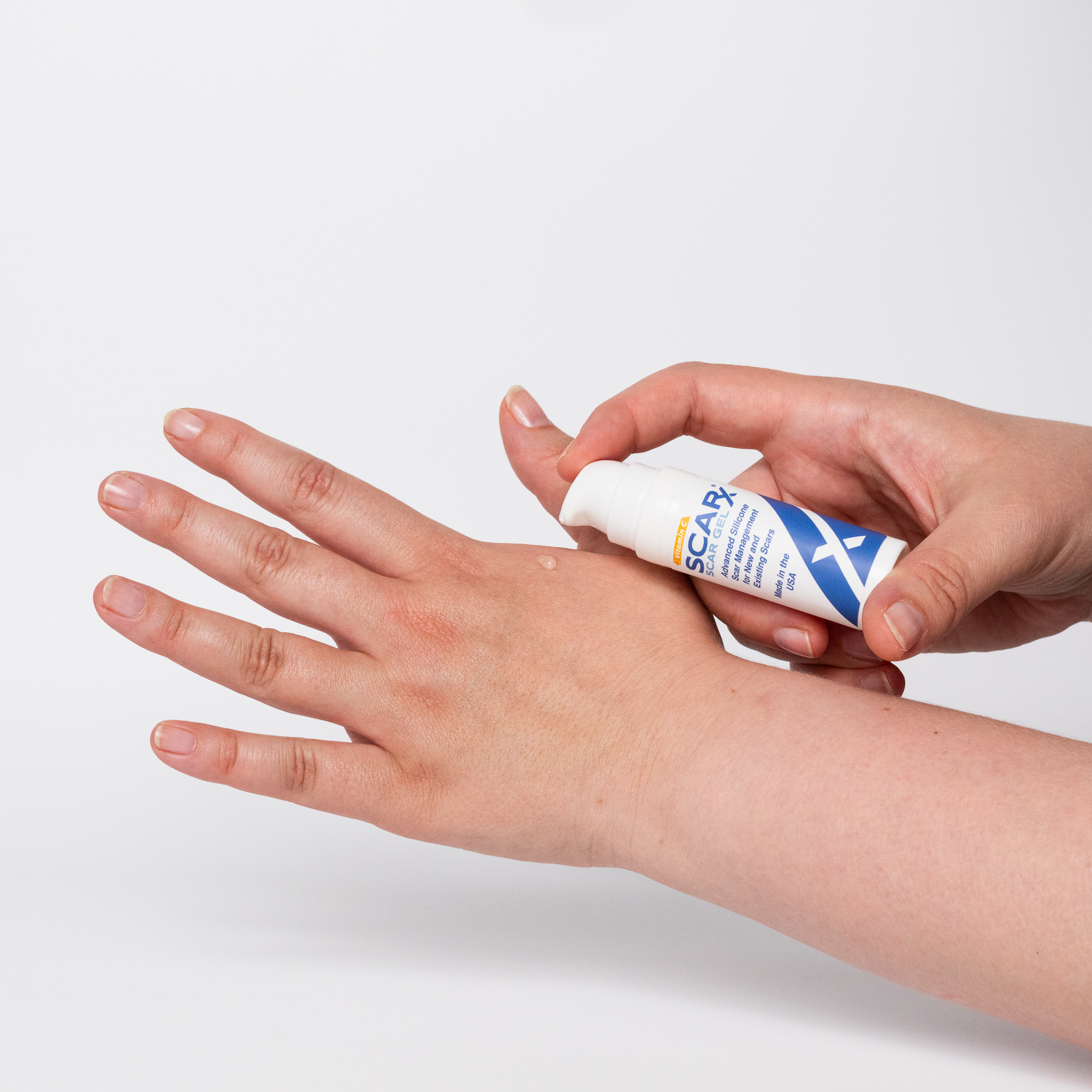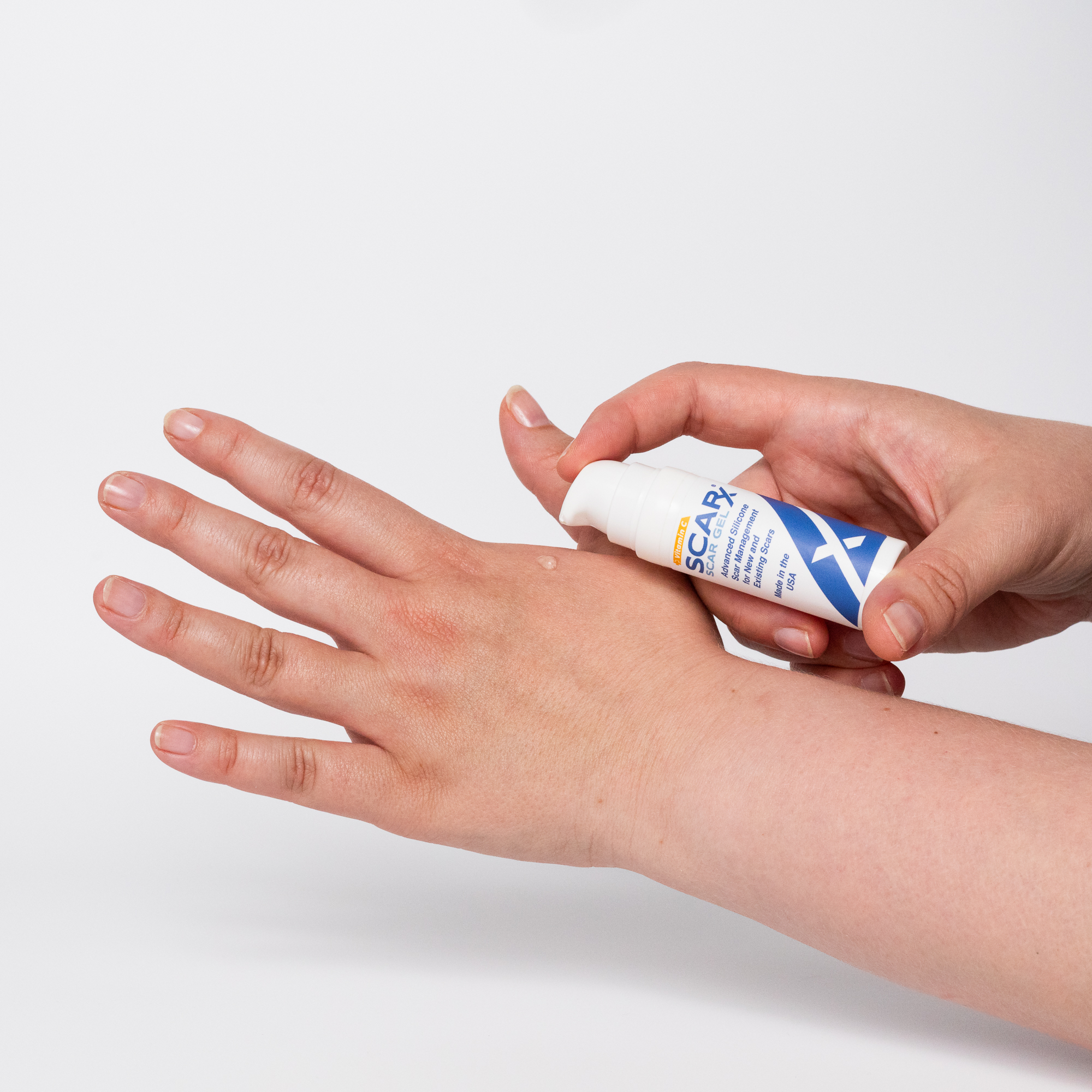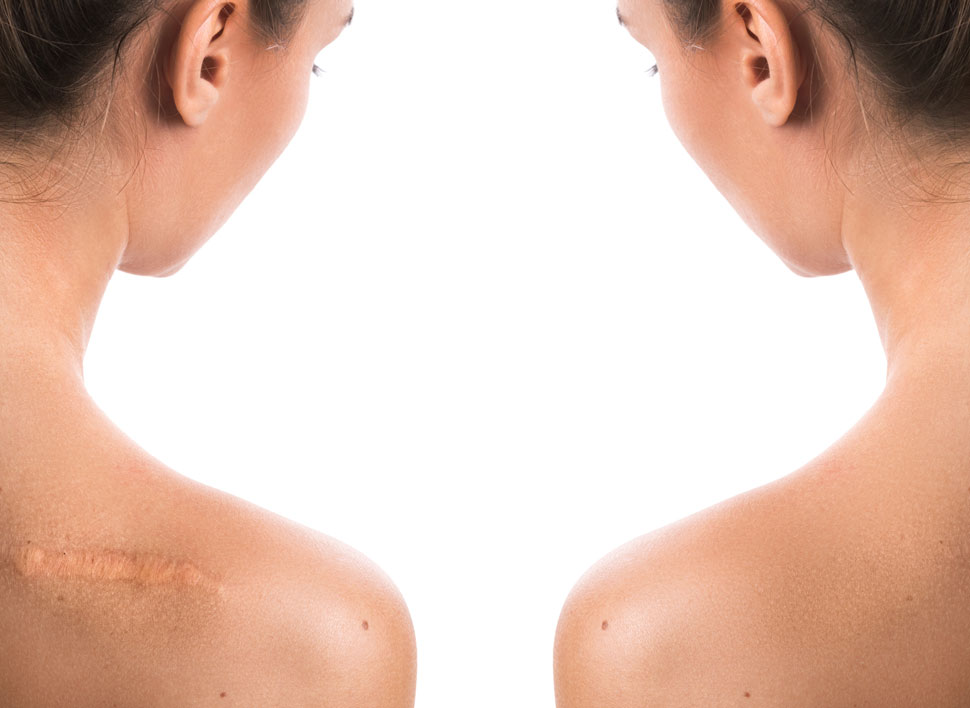There are many products on the market for the treatment of scars making it hard to chose the right scar treatment for your scars. The fact of the matter is that all scars and scar treatments are not created equal.
Scars a formed due to trauma to the deepest layer of your skin, the dermis. Everyone will have a different scar response based on their genetics and skin type. For real results the type of scar should be matched to the proper treatment. In this article we will examine the main types of scars and clinically proven treatment options.
Types of Scars
There are three main types of scars are Fine-line, Keloid, Hypertrophic, and Atrophic.
- Fine-Line scars are typically formed after minor injuries or surgery. The result in a thin slightly raised scar that fades over time but does not completely go away. In darker skin tones, fine-line scars may fade to leave a white mark that will not tan..
- Hypertrophic scars are caused by trauma to the dermis, the deepest layer of your skin. They can be cause by surgery, cuts, burns, and in rare cases acne. Hypertrophic scars are raised, thickened, and often exhibit redness. Hypertrophic scars are the most common scar type.
- Keloid scars are very similar to hypertrophic scar in that they ae raise, thick, and may exhibit redness. The distinguishing factor is that Keloids continue to grow outside of the original wound boundary.
- Atrophic scars differ from those listed above because they represent a net loss of collogen, not an excessive build up of collagen. Atrophic scar are mostly caused by acne and present as pits or pin holes. Ninety percent of acne scars are atrophic. ScarX is not recommend for treatment of atrophic scars.
Types of Topical Scar Treatments
There are various types of topical scar treatments on the market. Some are lotion-like creams and some are silicone gels. Many of the leading cream type treatments contain various moisturizers and ingredients like onion extract, allantoin (comfrey extract), hyaluronic acid, and vitamin E. However, there is very little data to suggest that cream based scar treatments are effective.
The lack of effectiveness of cream scar treatments is a result of the fact that cream are designed to be absorbed your the skin. They do no create a skin barrier that forms a micro-environment around the scar, keeping harmful things out and locking in moisture.
Most dermatologist and plastic surgeons recommend the use of a silicone gel product for the treatment of new and existing scars. Silicone scar gels have a long history of success in fading scars. If you would like to gain more information on the importance of silicone gel in the treatment of scars, check out these links: Link1, Link 2
Effective Active Ingredients
When choosing a silicone scar gel, it is important to check the product’s active ingredients. The most effective ingredients for treating scars are:
- Silicone: As mentioned earlier, silicone is the most effective ingredient in reducing the appearance of most types of scars. Silicone creates a barrier trapping in moisture and keeping out environmental contaminants.
- Vitamin C: Vitamin C helps to protect the skin from free radical damage and most importantly plays a major role in modulating collagen creating.
How to Choose the Right Scar Gel
When choosing the right scar gel for your you, it is important to consider the following factors:
- Scar severity and Type: If you have a mild to severe hypertrophic or keloid scar; or just a thin-line scars, ScarX is a great choice. We do not recommend the use of ScarX for atrophic (acne) scars.
- Active Ingredients: Silicone and vitamin C are the most effective treatments for scars. ScarX is a simple formulation of silicone gel and vitamin C. that’s it. No unproven ingredients to cloud the issue.
- Ease of Use and Convenience: There are several thing to consider when it comes to ease of use and convenience. These include tackiness and dry time and ease of application. ScarX has a luxurious silk feel and dries with 2-3 minutes. Unlike most silicone gel treatments that may take 10-15 minutes to dry and are tacky or sticky. Drying time is important, especially if you are waiting to apply makeup over the scar. Lastly, ScarX is offered in an airless pump bottle that dispenses cleanly with a metered dose, not a messy squeeze tube. These benefits make it easy to carry ScarX with you and apply on the go when necessary.
- Price: Scar Gel prices can vary. ScarX is competitively priced in the direct to consumer market but provides an exceptional value to to it’s effectiveness, luxurious feel, quick drying formulation, and easy of use.
Tips for Using ScarX Gel
To get the best results with Scar Gel, follow these tips:
- Wash the scar area with warm water and soap before applying the gel.
- Dry the area completely.
- Apply a thin layer of ScarX Gel to the scar.
- Allow ScarX to dry. then apply makeup as normal, if desired.
- Apply Scar Gel twice a day, morning and night.
- Be committed, Use ScarX as recommend for 8-12 weeks. No scar topical treatment an reverse scarring overnight.
Conclusion
Scar Gel is a safe and effective product for reducing the appearance of most scars. Everyone’s scar response is different based on genetics and skin type. By choosing ScarX, you are giving yourself the best topical treatment possible. Our desire is to help you achieve significant results toward the appearance you desire.





